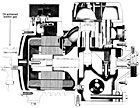
Figure 1. An oil pump is located at the end of the compressor’s crankshaft. (Courtesy of Ferris State University)
Many larger compressors in the refrigeration and air conditioning field have forced-oiling systems. These compressors are usually over 5 hp. They contain an oil pump located at the end of the compressor’s crankshaft (Figure 1). The crankshaft is actually connected to the oil pump and supplies power, which turns the oil pump.
Oil pumps can be of the gear or eccentric type. The oil pumps force oil through drilled holes in the crankshaft and deliver it to bearings and connecting rods (Figure 2). The oil then drops to the crankcase to be picked up again by the oil pump. Smaller compressors usually have some type of splash-type oiling system. These systems have an oil scoop that scoops and flings the oil throughout the crankcase causing an oil fog as the crankshaft turns.
When dealing with compressors that employ an oil pump, many service technicians confuse net oil pressure with oil pump discharge pressure. However, it is of utmost importance that technicians understand the difference between these two pressures when servicing compressors with oil pumps.
The oil pump’s rotating gear or eccentrics adds a certain pressure to the oil pumped through the crankshaft. This pressure is considered net oil pressure. Net oil pressure is not the pressure that can be measured at the discharge of the oil pump. The oil pump picks up oil (at crankcase pressure) from the compressor’s crankcase through a screen or filter (Figure 2).
The oil pump discharge port’s pressure includes both crankcase pressure and oil pump gear pressure it adds to the oil. This is why net oil pressure cannot be measured directly with a gauge. A gauge at the oil pump’s discharge port would register a combination of crankcase pressure and oil pump gear pressure. The technician must realize this and subtract the crankcase pressure from the oil pump discharge port’s pressure to get the net oil pressure. The equation is as follows:
Oil pump discharge pressure - Crankcase pressure = Net oil pressure

Figure 2. Oil pumps force oil through drilled holes in the crankshaft and deliver it to bearings and connecting rods. (Courtesy of Ferris State University)
To find out, simply subtract the crankcase pressure from the oil pump discharge pressure to get net oil pressure. In this case, it would be 80 psi – 20 psi = 60 psi net oil pressure.
This means the oil pump is actually putting 60 psi of pressure into the oil when delivering it into the crankshaft’s drilled passages. (Fig. 3 shows a cutaway of a semi-hermetic compressor incorporating an oil pump and drilled oil passages through the crankshaft.)
Oil safety controllers are called differential-type controllers. They sense the difference between oil pump discharge pressure and crankcase pressure. This is why these controllers have a capillary tube or pressure transducer connected to the discharge of the oil pump and the crankcase to sense a difference of pressures or net oil pressure. (Fig. 1 shows the pressure transducer sensing net oil pressure in a semi-hermetic compressor.)

Figure 3. Cut-away of a semi-hermetic compressor incorporating an oil pump and drilled oil passages through a crankshaft. (Courtesy of Copeland Corp.)
• Compressor size;
• Viscosity of the oil;
• Temperature of the oil; and
• Bearing clearance.
Larger compressors need more net oil pressure because they have more surface areas to lubricate. The oil pumps must also pump and carry the oil greater distances within the larger compressor. Also, as the oil gets hotter and its viscosity drops, the net oil pressure will also usually drop. As a compressor wears, its tolerances will become greater and easier for the oil to escape through its clearances.
Publication date:01/11/2010


Report Abusive Comment